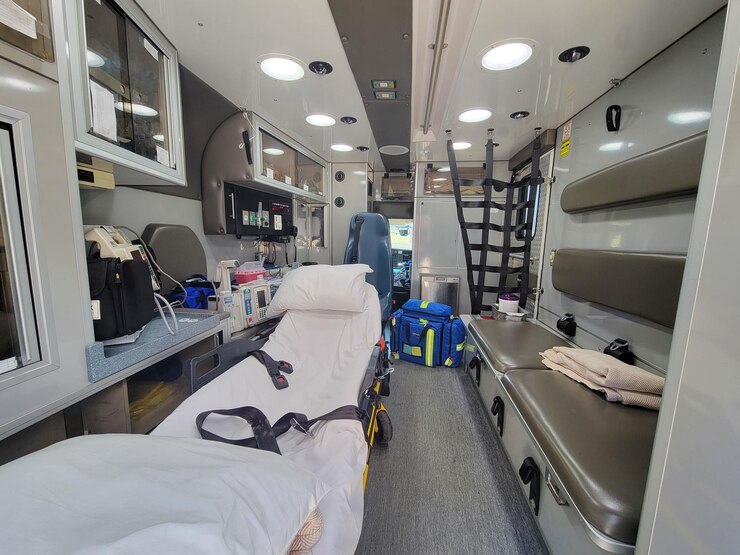The Rise and Fall of Veneto’s First Private Emergency Room, A Controversial Start in Legnago
The concept of a private emergency room has been gaining attention worldwide as healthcare systems grapple with increasing patient loads and stretched resources. In Veneto, Italy, this innovative idea took center stage with the launch of a private facility in Legnago, aiming to provide specialized care for non-critical cases. However, what began as a promising alternative quickly devolved into a heated controversy, raising questions about regulatory compliance and the future of private healthcare in the region.
A Bold Initiative, The Launch of a Private Emergency Room in Legnago
In an effort to alleviate pressure on public emergency departments, Domus Salutis, a private clinic in Legnago, introduced its private emergency room to cater specifically to “minor codes.” These cases, typically involving non-urgent medical needs, often clog public emergency rooms, delaying care for critical patients. The clinic marketed this service as a faster, patient-funded alternative that could streamline healthcare delivery.
The launch was met with curiosity and hope by some who saw it as a necessary evolution in healthcare services. With promises of immediate attention and a focus on minor injuries and ailments, Domus Salutis positioned itself as a complementary option to public hospitals. However, this bold initiative quickly drew the scrutiny of local authorities.
Minor Codes, Major Controversy, The Role of Domus Salutis
At the heart of the controversy was the definition and handling of “minor codes.” Domus Salutis claimed its facility would exclusively address non-critical issues, offering convenience for patients willing to pay out-of-pocket. The clinic’s website emphasized that its services did not replace public emergency care but served as a supplementary option for those seeking prompt attention.
Despite these assurances, confusion arose regarding the facility’s role and its compliance with healthcare regulations. Critics argued that the existence of a private emergency room blurred the lines between public and private healthcare, potentially creating a two-tiered system that undermined the universal accessibility of emergency services.
Regional Authorities Step In, Why the Emergency Room Was Blocked
The Veneto Region’s health authorities were quick to act, halting the operation of the Legnago facility shortly after its announcement. According to Manuela Lanzarin, the regional health councilor, the clinic did not meet the structural and operational requirements to function as an emergency room. Furthermore, it lacked accreditation with the National Health Service (NHS), a prerequisite for any facility providing emergency care under Italian law.
The authorities also raised concerns about transparency, stating that the facility’s online promotion implied it was a fully operational emergency room, which could mislead the public. The involvement of NAS Carabinieri, a branch of law enforcement specializing in healthcare compliance, further highlighted the gravity of the situation.
Legal and Structural Challenges, What Went Wrong?
The failure of Veneto’s first private emergency room underscores the complexities of integrating private healthcare initiatives within a heavily regulated system. Domus Salutis faced several challenges:
- Regulatory Non-Compliance: The facility did not align with the stringent standards required for emergency rooms in Italy, including structural specifications and integration within the emergency care network.
- Accreditation Issues: Unlike other private clinics in the region, Domus Salutis lacked NHS affiliation, limiting its ability to operate as a legitimate emergency facility.
- Public Perception: Miscommunication about the clinic’s role fueled public skepticism and regulatory intervention, further complicating its operations.
The Response from Domus Salutis, Setting the Record Straight
In response to the closure, Domus Salutis issued a statement clarifying its position. The clinic emphasized that its private emergency room had been operational since 2016, providing outpatient services under the designation of a medical-surgical clinic. It reiterated that its offerings were never intended to replace public emergency care but to complement it by addressing non-urgent cases.
Domus Salutis also highlighted its compliance with previous inspections and the transparency of its operations, questioning why the authorities had only now raised objections. The facility’s legal team argued that the closure was unjustified and called for a thorough review of the regulations governing private healthcare initiatives.
Public vs. Private Healthcare, Where Does This Leave Veneto?
The Legnago incident has reignited debates about the coexistence of public and private healthcare systems. Proponents of private emergency rooms argue that such facilities can relieve the burden on public hospitals, offering faster care for minor issues. Critics, however, worry about the potential for inequity, where those who can afford private care receive preferential treatment, leaving the public system underfunded and overstressed.
For Veneto, this controversy serves as a cautionary tale about the need for clear guidelines and collaboration between public authorities and private entities to ensure that innovative healthcare solutions benefit all citizens.
Implications for Future Private Healthcare Ventures
The rise and fall of Veneto’s first private emergency room highlight several key takeaways for future ventures:
- Regulatory Alignment: Private healthcare providers must thoroughly understand and comply with local laws and accreditation requirements before launching new services.
- Transparent Communication: Clear and accurate messaging is essential to avoid public confusion and regulatory pushback.
- Collaboration with Authorities: Working closely with health authorities can help private facilities navigate regulatory complexities and gain public trust.
While the Legnago facility’s journey ended abruptly, it has sparked important discussions about the role of private initiatives in modern healthcare. By learning from these challenges, future endeavors can pave the way for a more integrated and effective healthcare system, where private emergency rooms and public services work together to meet the needs of all patients.

